How Much do Interior Designers Cost?
In the age of 30-minute house fixer upper shows on HGTV and new on-line interior design services, it’s understandable if you think remodeling your home would be fast, easy and surprisingly cheap. While these outlets are really fun and make interior design more approachable, they can also create a bit of a misconception regarding what a project will actually cost, what you will get and how long it will take – all leading to unrealistic expectations that could set you up for disappointment.
So let’s break it down…
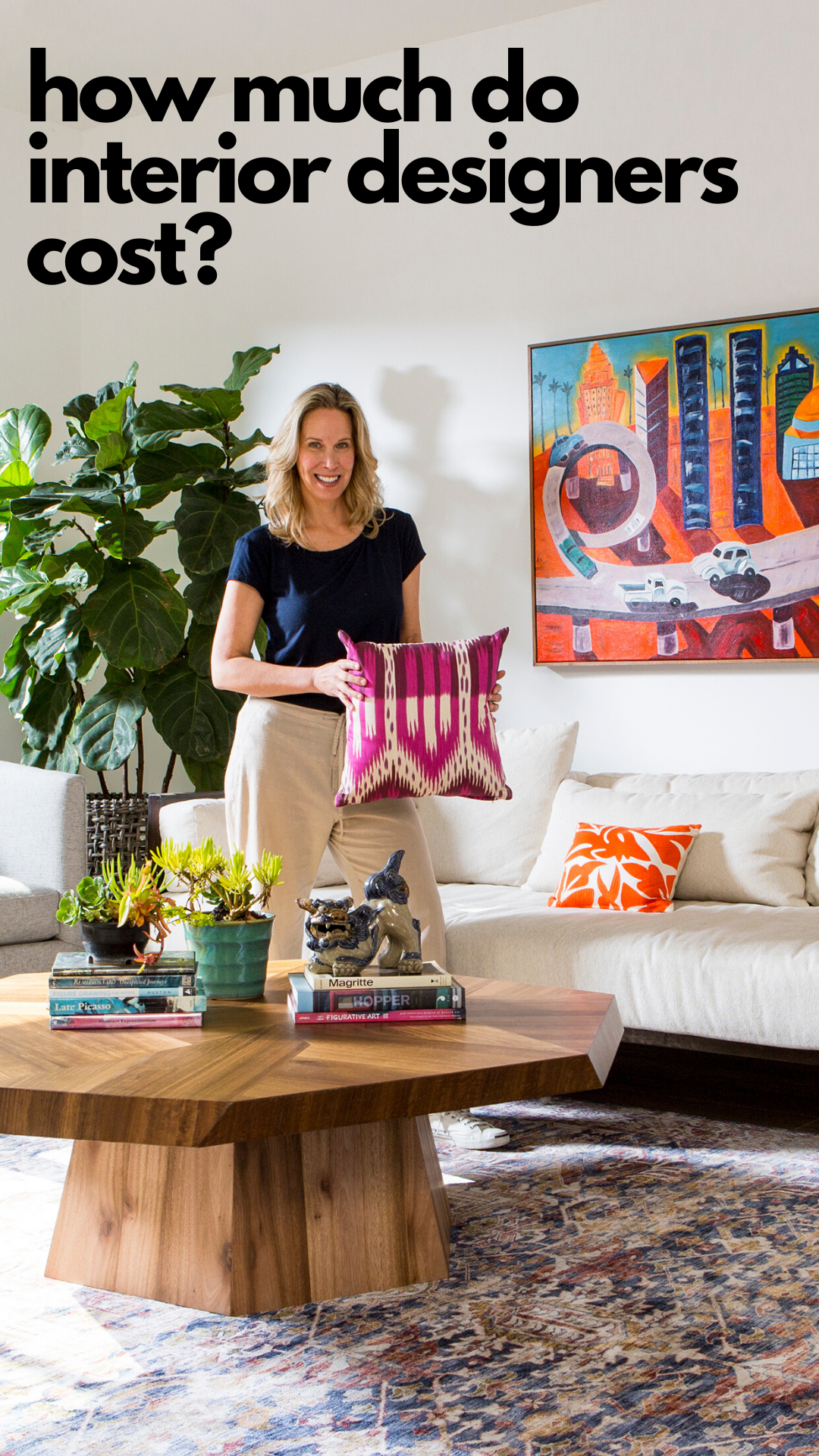
[ninja_form id=2]
Before You Call an Interior Designer
Ask Yourself These 3 Things:
What would you like to do?
Are you looking for new furniture in your living room, or would you like to remodel your dated kitchen? Do you want all new flooring and fresh paint, or would you like to gut the whole place and start over? Be specific in your goals, and at the same time, be realistic. You may just need a little advise on what to do and where to go to buy things, or you might need someone to run the whole shebang for you.
For Example: This home was remodeled with new materials and finishes, including this kitchen which has new flooring, cabinetry, counters, backsplash, lighting, paint, plumbing and appliances. To save money, we kept the original floor plan and left the plumbing and appliances in their existing locations.
What is size of your project?
Is it one room or the whole house? What’s the square footage?
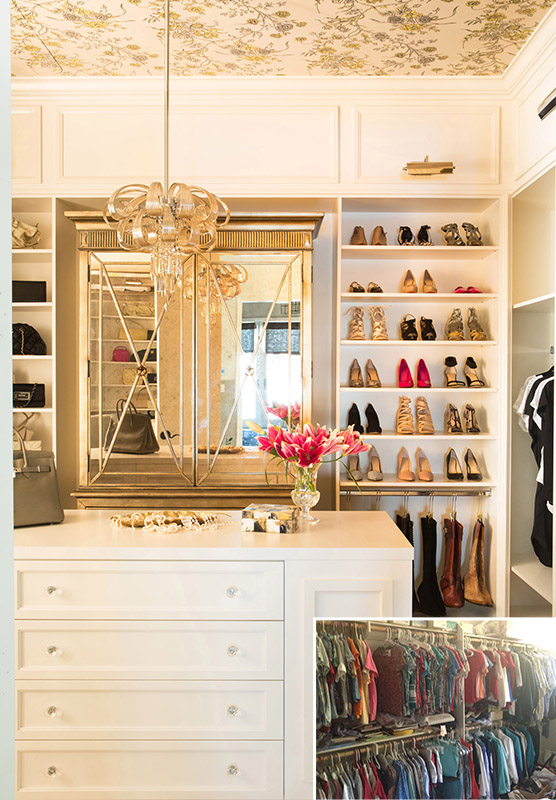
For Example: This walk-in closet had no organization and zero style. We designed custom cabinetry for optimal storage, and added beautiful elements like a mirrored armoire, crystal knobs, decorative lighting and floral wallpaper on the ceiling.
What you would like to spend?
Your budget could be $5,000 or $500,000. Here’s where being realistic comes into play. Your budget dictates what you’re able to do, and you decide what is most important. Give yourself a little wiggle room for unexpected items (like water damage in a wall that’s discovered during demolition and construction, or that chandelier that you absolutely fell in love with).
For Example: You could spend $150 for the chandelier on the left, or $40,000 for the 1850 Victorian English Crystal Chandelier on the right.
WHAT YOUR BUDGET SHOULD INCLUDE:
Cost of Materials and Finishes: These are items that will be attached to the structure of your room or home. It includes countertops, cabinetry, plumbing and appliances, wall tile, flooring, windows and doors, hardware, custom cabinetry, architectural details, etc.
Cost of Furniture: These are decorative items that are not attached to the home. Think of it this way: if you were to flip your house upside down, your furniture and accessories would fall out. This includes, upholstered furniture, casegoods (tables, buffets, dressers, etc), lighting, rugs, art and accessories, etc.
Fees for Interior Designer (Concept Look & Feel, Overall Design, Floor Plans/Construction Documents, Purchasing, Project Management and Installation)
See examples below for examples of how some designers charge.
Fees for General Contractor (Labor and Project Management).
Miscellaneous Fees (Permits, Taxes, Shipping, Storage, Installation/Delivery, etc.)
HOW MUCH DO INTERIOR DESIGNERS CHARGE?
1. FLAT RATE
Based on your project size and needs, an interior designer would quote a flat fee for their services. The contract would clearly list what would be included for this fee, along with how many revisions are available and the contract’s expiration date (when the project will be completed). If someone has a budget over $50,000, this is our preferred way of doing business because it’s transparent and both sides win. You know what you’ll be paying in fees, and the designer knows what they will be earning – this creates a service based contract. This way, you won’t feel like they are in the dark or blind-sided as you continue to be billed for never ending design costs, and the designers know exactly what is expected of them and how much time they need to work on a project. When we do flat rate contracts in our firm, we don’t mark anything up or collect a commission from our vendors for items sold. We extend our designer discounts to our clients. Our clients appreciate this because they know that we specify an item that would be perfect for their project, not our pocketbooks.
2. COMMISSION
Most Interior Designers charge 30-35% commission on items purchased at their reduced cost. This commission is in addition to a low service fee and/or retainer, which seems attractive to clients at the beginning of contract agreements. We’re not a huge fan of doing things this way because it can put designers and clients on opposite sides of the table. For instance, if two items are comparable and one is more expensive, a designer will make more money by presenting the more expensive item and the client would never know. It has the potential for the client to question why selections are being made. A designer can also suffer when a client purchases an item without their assistance in order to save money.
3. SHARING THE DIFFERENCE
Similar to the commission based fee, but the the cost savings is split between the the Designer and Client.
4. MONTHLY RETAINER
This arrangement is based on an agreed amount to be paid each month before work is done on a regular basis (let’s say $5,000). The contract must be very clear on what is expected of the designer (ie. services, communication, hours, etc.)
5. HOURLY RATE
The most simple of all ways to pay an Interior Designer. This rate structure works best for smaller projects with limited amount of time required for completion. Rates can run anywhere from $75 per hour for a student to $1,500 per hour. We like to use this structure when my clients only need a little bit of our time and expertise. Our firm charges $500 per hour.
6. SQUARE FOOTAGE
This fee structure takes into account the amount of square feet that will be covered on a project. For example a 10,000 square foot property with 6,000 square feet of exterior space that is being billed at $6 per square foot, would have an interior design fee of $96,000. This is generally the structure that interior designers use when they work on hospitality and commercial projects.
7. PERCENTAGE
A percentage interior design fee takes into account the total budget that the client will spend, including things like: construction, materials and furnishings. This fee structure is multiplied by a percentage to calculate the interior designer’s fee.
8. BARTER
If you have a service or item that an interior designer would find of value, they may be willing to trade with you. For example, a spa owner who is interested in the interior design of their shop may give their products and services to the interior designer in exchange for interior design services.
[ninja_form id=3]
9. COMBINATION
Any combination of the previous fee structures can be used to come up with a combination fee structure. Interior Designers and Clients can get very creative and specific in the fee structure by combining rates.
CONSIDER THE STATUS OF THE DESIGNER:
Do they have decades of experience?
Are they professionally trained, licensed, accredited?
Have they been published?
Do they have a body of work that reflects a client’s particular needs -style and type of project?
Are they in demand and able to charge a premium?
For a better idea of
What a Remodel Might Cost
check out our post here.
For more information on
How to Hire an Interior Designer and the Process of an Interior Design Project
check out our previous posts here, here and here.

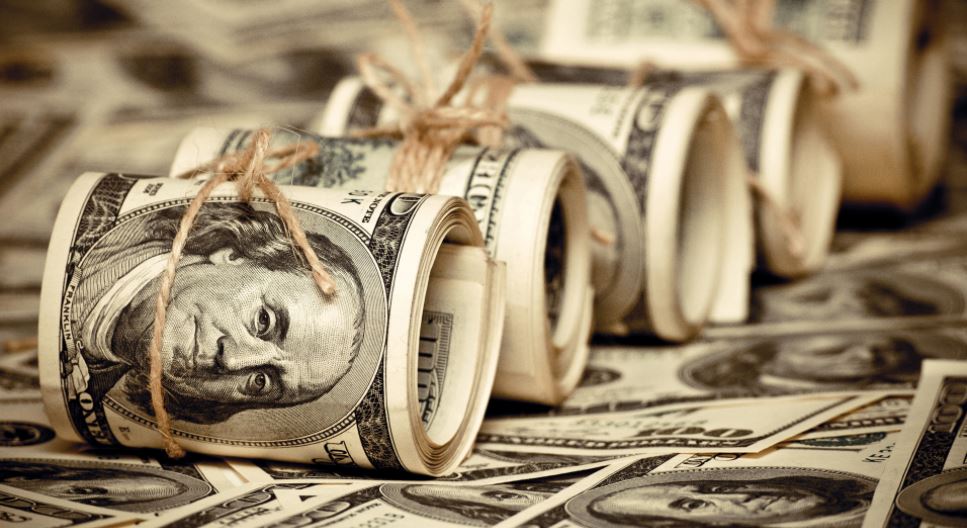

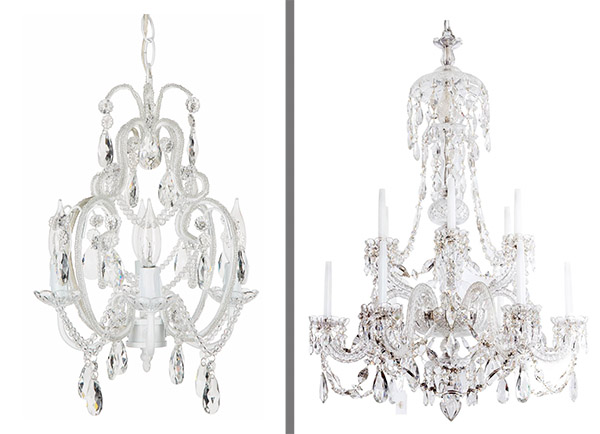


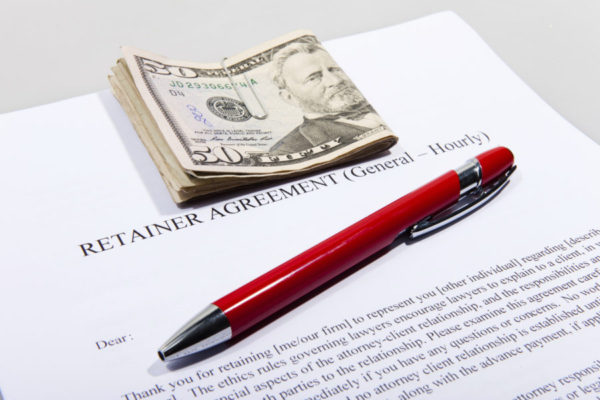

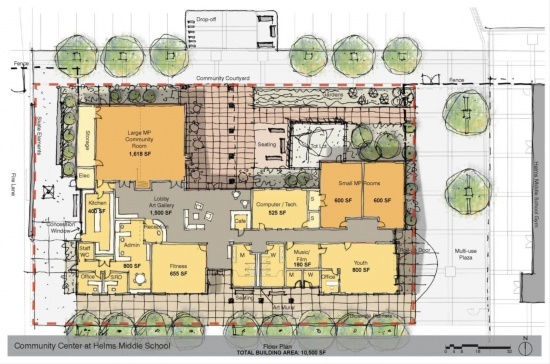







Lori,
Very well thought-out I get this question quite often as well. I was wondering if you ever use the square footage method for residential projects? I have used this method a few times with my projects and clients seem to be fairly receptive to it.
Yes, I have used the square footage method for a large, residential project that included both design and construction services. The client was extremely reception to it.
I’ve had mixed experiences with this. Larger homes tend to be frightened when I do the math!
If I am doing a project for $29000 how much should I charge as a designer? I am buying furnitures and I am selecting all finishes through out the whole space ( carpet, tile, wall paper….)
It really depends on your experience level and area where you are designing. For a flat rate, start with 15-30% of the entire budget as your fee.
Lori-
I’m in a tough spot. I am responding to an RFP that I was sent for a commercial housing project from a property management company. They are soliciting bids from interior designers to design the space. More or less furniture selection, placement, color scheme throughout the space. They inform me that I would be working with the architecture firm to collaborate on flooring, lighting and other finishes. This would be my first “BIG” commercial project and I am having a difficult time coming up with a bid. I am a single owner of my company. And I currently hire another interior designer for special projects that require more time commitment. I don’t want to outbid myself but I also don’t want to get stuck doing more work than what I will be paid for. I was going to do a per sq/ft rate. But I have a question about your approach. In your example you are billing the client $6/sq/ft for their outside space. Why would you bill for the outside space when it is not directly related to the interiors where you are designing? The total square footage for this project is 60,000 but I am not required to design for the entire space. So, if I charge on the square footage, would I charge charge a percentage for furniture too? I am excited to get this job, but stressed out at the same time. I currently charge $125/hr for myself and $50/hr for assistant designers. Any thoughts on how I should write up my proposal?
You’ll want to find out exactly how many square feet you’re responsible for designing for interior architecture and FF&E (furnishings, fixtures and equipment). Your square foot charge will vary in region. But $6/sqft sounds right. You would only bill for exterior if you were working on the spaces, i.e., hardscape, landscape, seating, furniture, lighting. In this rate you would include furniture specs and either have a separate contract for purchasing or hire a purchasing firm.
I hope this helps.
You really sound like a great candidate for Design Camp. You’ll learn a lot about the business of design and meet designers from all over the country. It’s great to have other designers to collaborate with when you’re uncertain how to proceed. Our next camp is Altanta Jan. 30 -Feb. 1. Check it out. http://designcamp.com/
Hi. I live in Dallas, TX and we are currently in the beginning of building a new home (break ground this summer). We have hired our architect to be in charge of the project form beginning to end and we are paying him 10% of total build.
I interviewed a decorator yesterday – to help me pick out tile, help me have a consistent look throughout, etc…she quoted $4/sq ft. Does that seem reasonable. (sq footage will be around 3800)
Congrats on your new home!! The designer gave you a very reasonable price. For your reference, I’ve quoted $6-11/sq ft.
sounds reasonable to me.
Hello this is Rohith Gupta from India my self architect/interior designer can you help me in how the designers, architects charge for interiors,elevations with total execution . myself just started my business as we charge to clients in % based or hourly based or some fixed amount or monthly based how do should charge its confusion to and what is the present market fess going on .! please can do help me .! i will be very thank full to you .! in every project i m facing the problem with clients in fees matters .! please mail to me at kalakondarohithgupta@gmail.com .!or please post ur reply.! and ryt know i have started a elevation design for one of site its total sq ft is 1800 i told to client to charge as for 12 % on total elevation making value .! can u please help me .! and i have project in my hand i have to design a museum can u help in that also
I m going for job at furniture store how would be the charge as interior designer consualting at shop.
If you use the square footage approach, does that fee cover furniture, merchandising, accessories or is it just for your design time?
If you bill enough and set time lines… it should cover everything.
If you charge enough per square foot, yes.
Hi Lori,
I appreciate your comments and advice.
I recently have been approached to put a proposal together for a high-end spec house. I have a conceptual floor plan which the client is asking me to provide full design. Produce all exterior elevations, interior elevations, specifications, etc. They have already selected a GC but are looking for me (if they accept my proposal) to put together the full design team; architect, civil and structural engineers. I’m very excited about the opportunity but to be honest I’m not sure how to bid it. If I go square footage (6600 sq. ft. including covered lanai’s, garage, porte cocher.) I think biding this as square footage is a good route but than you might get stuck with clients wanting numerous changes in the process which means lots of redrawing. If I’m doing interiors at a rate would this include all the exterior elevations/designs as well or would I incorporate a sliding rate for exterior/interiors. I really could use some advise.
Thanks, Tamara
It sounds like you’re on the right track! We’re doing a Design Camp in Orange County Oct. 9-11. The best person I know regarding designer rates, Kim Seldon, is coming to speak. Try to get to that camp and spend some time with her and get feedback from the other 120 designers.
Is there a web site available for info on the Design Camp in October?
Yes. DesignCamp.com If you bring a friend, it’s $500 off! Hope to see you there.
I have a small interior design business. After the project is completed I hand over all receipts along with a spread sheet outlining every penny spent. I know there is a much better way to prove where there money was spent and do I have to show them their receipts?. Please help?
Try my friends at Connexion Software, it’s what you use to keep Professional records and run your office the right way!
I work for a custom home builder who has recently taken on a large residential project with a small commercial wing. I come from an art and design background, with lots of real world experience in many fields, however, I have never worked on an interior design project. The interior design/redesign of the main building is being done by myself, on top of my normal project management and office work. if the scope of the project is around 55 million, I estimate the main building at about 25million… what percentage is fair to charge on this project? Taking into consideration that I don’t have a degree in this field and that it is great experience.
You charge ’em bitches 10 dolla! Ya heard!
We want to renovate and extend our kitchen. It is currently apprx. 200+sqft and we want it to be apprx 400 sqft. We thought it might be wise to get (pay for) advice from an interior designer rather than relying on whoever works in a store. If we just wanted an hour, would we be dinged for that? I know builders and I know what I want. I would just like a little advice and this is something I would like to budget for.
I charge $400/hr for consultations, other designers range from $75/hr-$1200/hr.
Hello , I am architect and worked for interior designing projects outside USA , but I’m new in the business here and I’m not registered architect yet . But I was asked for consultant from a client for his day care building , I’m little bit confused how to charge him and will it be better to have a flat rate ready to ask for as I didn’t work before with hourly counting , or square foot percentage ( if he wanted more than consultant ) , and about the website for interior designer campus you mentioned up , do you have plans in Florida ? Or not yet ?
Thank you for this helpful blog .
I am on a payment structure with a designer. I paid a 5000 retainer fee with a schedule of payments for a total of 12000 for a six month project. It’s been about 5 weeks, and we have done a few meetings, one trip to look at tile, some boards with 3 hand drawings and magazine pictures. We haven’t really gotten any true elevations, or really any decisions made that I couldn’t have made myself. For example, she has bought some shower valves under time duress from our architect. I feel I could have bought them myself and have since found the same for hundreds less per item. Is this normal? Will I get more as the months progress? Am I expecting too much?
I am working on a commercial project in Texas. It is a wonderful opportunity and I want to be fare about my fee. the project is a total of 50,000 sg.ft.. I will be supplying all services and construction observation. I normally charge $95.00 per hour or $2.75 per square foot. My client wants a flat fee and I totally do not know what is fare. The scope of this project is huge and will take a total of 4 months every day. Please help. Bid is due tomorrow.
p
If you think you’ll be working 16 weeks at 40 hours a week, do the math. 95 dollars per hour x 16 weeks x 40 hours= $60,800. If you feel that’s too much because you won’t actually be working 8 hours everyday on it, make it $49,500.
IN any event, you should get yourself to DesignCamp.com Oct 9-11. You are not charging enough!
Hi Lori,
I have a living room that is 54 square meters that requires to be completely redecorated. Would you say that 15% of the total billed amount on the furniture would be a fair rate to pay for an interior designer?
Many thanks!
BTW I would say 30% sounds more like it.
15% is a steal!
Hello…Lori,
You’re forum is very informative. A few things here. I have a new project I’m taking on..and I’m struggling with the billing part. I’m decorating different sections of the home and a doctors office (same client). I will purhcase the matieral and I’m hiring a contractor to do majority of the leg work (install blinds, french door, wall hanging etc). I’m also hiring a person to make custom drapes.
How would you recommend me to charge. I am basically consulting, and doing all shopping. Which method would you recommend I charge. I’m sturggling with this since there are several other hands I’m dealing with. I was thinking the percentage method..but not sure.
Thanks
Thank you, very helpful article.although i’m not living in US, your recommended ways of charge is same here,personaly I charge my clients by flat fee,but honestly i don’t feel safe with this method!during some projects as i face with unpredictable situation and problems I feel that I have to charge my client more but unfortunately I have no way as i signed a contraction by flat fee.do you have a recommendation about this?
This could be the superb weblog for anybody who desires to seek out out about this subject. You acknowledge rather a lot its just about arduous to argue with you (not that I severely would want…HaHa)!!! You certainly put a brand new spin on a topic thats been written about for decades. Good issues, simply good!
If someone wanted to use me as a purchasing agent and they have the exact item selected, what do you think I should charge for the purchasing service? I heard that some people will do this for 10% of wholesale and find it hard to believe. i still have to pay bookkeepers, deal with all the paperwork, have liability, arrange and deal with freight companies, SBOE etc. I think 20% is more in line , but I never have come across this situation before.
Just got a job from a large builder who wants me to select all finishes, hard and soft, lighting, paint colors, window treatment, tile, etc. for a new 4000 s.f. house he has framed out. The house will list for 1.1 mil. How would you charge for this.
Thank you,
Sandy
$500 per hour?????
Fuck off! Even doctors dont make that much!
Thanks for the spirited reply! Actually some specialists make much more than that, but yes, great designers do make decent money. After the 4 years of college, the 4 years post graduate work in design, specializing in Sustainable Design, getting accredited by passing two excrutiatingly difficult and expensive national exams: LEED and NCIDQ, writing a book on Green Interior Design, Touring the Country lecturing on the topic, teaching at UCLA, being published in countless books, magazines, websites and newspapers around the world, appearing on television umpteen times and starring in my own series on HGTV, working in the field for two decades, opening a construction firm and windows and doors distribution company to enhance my offerings and knowledge, leading the top interior design summit in the world-where I teach thousands of interior designers, designing furniture, fabric and rug lines and working with the top clients in the world for nearly two decades, yes I am at a point where people are willing to pay $500 per hour for my expertise. Let’s also add that I pass my designer pricing along to clients, saving them hundreds of thousands of dollars by hiring me. Finally, what I do for living is a LUXURY service business, much like a Rolls Royce dealership. Fortunately there are cars for every budget and places like West Elm that can help people who have more modest budgets. Even though many television shows mislead the public into thinking that an interior designer’s role amounts to “whipping up” a room in 24 hours for under $1000, it’s not. So if you don’t mind, I won’t “fuck off” just yet.
I’m interested to know what you meant by charging for the area of design. If I only need a built in wardrobe design in a 400 sq ft room, will I be charged for the whole room area or only the wardrobe area?
Howdy, i read your blog from time to time and i own a similar one and i was just wondering if you get a lot of spam comments?
If so how do you stop it, any plugin or anything you can suggest?
I get so much lately it’s driving me insane so any
help is very much appreciated.
Hello Lori,
I live in the Dallas area and was wondering what’s the best way to go about finding a professional interior designer to help with my project? Is Houzz.com a good resource? I’m looking to do my whole house over the course of time, say 1 to 2 years.
Also, how much do you think I should budget per room? Is $45/sf a good estimate? (That would mean a 15×18 sf room would be $12, 150).
Thanks so much!
I have read several good stuff here. Definitely worth bookmarking for revisiting. I surprise how so much attempt you set to create one of these wonderful informative web site.
I am an interior designer from india. I had designed and decorated a bedroom and bathroom, kitchen cabinet, and dining showcase. Also repainted the whole house. I purchased all the materials and managed labor. How can I charge for this project. The site was only 6km.away from my home.
Hi Lori,
My name is Lacey Hughes and I am an Interior Designer in Oklahoma City, OK. I own my own firm and have since 2013, so I am just in my first 1.5 years of being out on my own. I’ve been in the industry since 2007 and recently passed my NCIDQ tests. I’ve worked for a home builder, kitchen designer, design-build company and interior designer in my quick 7 years in this industry before going out on my own.
I recently was offered an opportunity to redesign an entire 3500 sf residence here in OKC. The homeowner has never worked with an interior designer before and that always makes me wary of how they will respond to my service fee contract. She bought the house at 150,000. After the house has been redesigned and all FF&E is accounted for she will be fine with an end total of 400-450k. The area will not hold more value than that. She would like to end up at around 400k, but realizes that for the furnishings of the house she can spend more because she can take these pieces with her when she moves on to the next house.
My question to you is, how do I cover my fees and not be chased out of her home when I give her the contract? I am prepared to explain in full why I would charge my particular fee, but I would love this opportunity as it is a scale that I’ve never done before (entire house). I normally charge 65-75 per hour. OR if they prefer a flat fee 2,500-3,000 per room, be it a plumbing or a non-plumbing room (ie: kitchen or living room).
How do you ensure that you’ll get the job that you want at the price you know you must charge based on your level of talent and experience? Do you reduce your fee in order to get the ‘step-up a level opportunity? Or are you prepared to walk away? I’m only 1.5 years into my own company and would love this opportunity. Also, the homeowner is a very pleasant person to be around.
Your advice on how to walk this very tight rope would be fantastic!
really good and informative blog.thanks to shared on this.